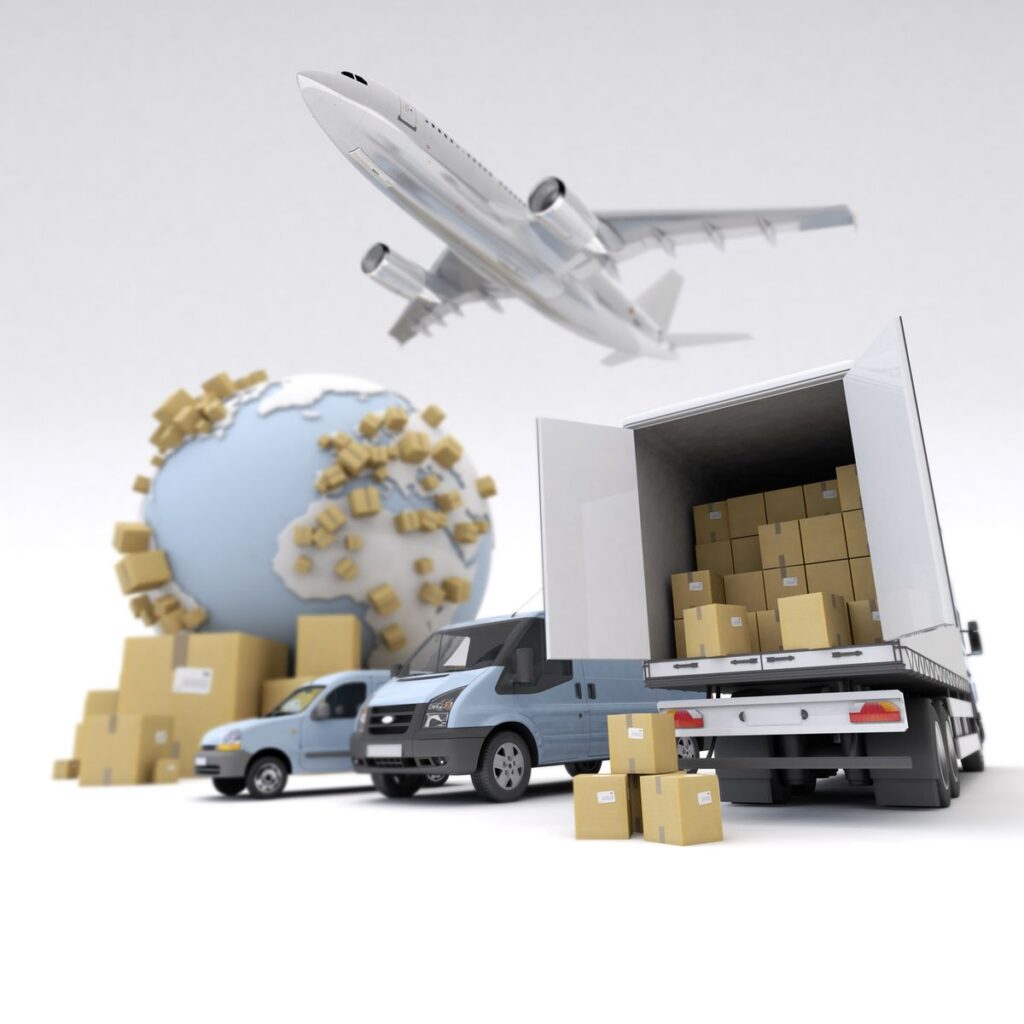The China to India container freight market plays a critical role in Asia’s trade network. With growing demand for electronics, textiles, machinery, and raw materials, importers and exporters are increasingly focused on optimizing cost, transit time, and customs processes. Compared to air freight, container shipping provides a more affordable solution while maintaining predictable schedules.
What Is China to India Container Freight?
Container freight between China and India refers to the transport of goods in standard 20-foot and 40-foot containers via sea or, in limited cases, rail and truck through neighboring countries. The majority of shipments travel by sea, connecting ports like Shanghai, Ningbo, and Shenzhen with Nhava Sheva (Mumbai), Chennai, and Kolkata.
Although transit takes longer than air freight, sea container shipping enables high-volume, cost-effective logistics for manufacturers, retailers, and wholesalers.
How Does Container Shipping Compare to Air Freight?
| Mode | Transit Time | Average Cost | Pros | Cons |
|---|---|---|---|---|
| Sea Freight | 14–22 days | Lowest | Economical, high capacity, versatile cargo | Slower, port congestion |
| Rail + Road | 12–18 days | Moderate | Balanced time and cost, inland coverage | Limited routes |
| Air Freight | 3–6 days | Highest | Fast, reliable for urgent cargo | Expensive, weight restrictions |
Accordingly, businesses usually select container shipping when handling bulk cargo and balancing supply chain costs.

How Much Does China to India Container Freight Cost?
Container freight rates vary based on container size, type, and market conditions.
| Container Type | Avg. Rate (USD) | Cargo Suitability |
|---|---|---|
| 20GP (FCL) | $650–$900 | Small volume, heavy cargo |
| 40GP (FCL) | $1,000–$1,350 | Medium-volume shipments |
| 40HQ (FCL) | $1,100–$1,450 | Light, bulky cargo |
| LCL (per CBM) | $50–$70 | Small consignments |
Moreover, seasonal demand during festivals or production peaks may influence prices.
How Long Does Shipping Take from China to India?
Transit times depend on origin and destination ports.
| Route | Transit Time |
|---|---|
| Shanghai – Nhava Sheva | 16–18 days |
| Ningbo – Chennai | 14–16 days |
| Shenzhen – Kolkata | 15–17 days |
| Guangzhou – Mundra | 17–20 days |
In addition, weather conditions, customs checks, and port congestion may extend delivery schedules.
What Documents Are Needed for Container Freight?
To clear customs efficiently, importers and exporters must prepare a complete document set.
| Document | Purpose |
|---|---|
| Commercial Invoice | Declares cargo value and trade terms |
| Packing List | Details cargo description and dimensions |
| Bill of Lading | Confirms carriage contract |
| Import/Export License | Mandatory for regulated products |
| Certificate of Origin | Certifies manufacturing country |
| Customs Declaration | Required by both China and India |
Without accurate paperwork, shipments risk costly delays at ports.
Real Case Studies of China–India Container Freight
Case 1: Ningbo to Chennai
- Cargo: Electronics, 18 tons
- Mode: 40GP container
- Cost: $1,250
- Transit Time: 15 days
- Benefit: Balanced cost and speed for electronics retailer.
Case 2: Shenzhen to Nhava Sheva
- Cargo: Textile rolls, 12 tons
- Mode: 20GP container
- Cost: $800
- Transit Time: 17 days
- Benefit: Competitive rates for seasonal apparel shipments.
What Are the Benefits and Challenges?
Benefits:
- Cost-effective for bulk cargo
- Stable capacity for large shipments
- Door-to-door solutions via inland trucking
- Lower carbon footprint than air freight
Challenges:
- Port delays during peak season
- Longer lead times than air freight
- Regulatory complexities for certain products
- Risks from congestion at major Indian ports
How to Select the Right Freight Forwarder?
When choosing a logistics partner for China to India container freight, businesses should evaluate:
- Experience with India’s import regulations
- Transparent pricing and surcharges
- Support for both FCL and LCL shipping
- Tracking and real-time shipment updates
- Value-added services like warehousing and distribution
A reliable forwarder ensures smooth customs clearance and reduced operational risks.
Future Outlook for China–India Freight
Growing bilateral trade, e-commerce expansion, and government infrastructure investments will continue to shape container freight trends. Additionally, sustainability initiatives and digitalized customs processes promise more efficient, eco-friendly shipping solutions.
Without a doubt, the container freight market will expand as India’s demand for Chinese raw materials, electronics, and industrial equipment grows further.
Conclusion
In summary, the China to India container freight market provides cost-effective and reliable solutions for businesses trading across Asia. With competitive rates, stable transit times, and support from experienced freight forwarders, container shipping ensures efficient logistics for diverse industries. By preparing accurate customs documents and planning ahead for seasonal variations, companies can optimize their supply chains and secure long-term growth.
- Consult TJ China Freight Forwarding for the lowest quote. They will provide you with reliable, cost-effective service.
FAQ:
Q1.What is the average cost of shipping a 20GP container from China to India?
The average cost ranges from $650–$900, depending on port pair, cargo type, and seasonal demand fluctuations.
Q2.How long does container freight take from China to Chennai?
Transit time averages 14–16 days for shipments from Ningbo to Chennai, offering faster schedules than many ocean routes.
Q3.Can small businesses use LCL shipping between China and India?
Yes, LCL shipping allows importers to share container space, paying only for the cubic meters used in their shipment.
Q4.What customs documents are required for textile imports into India?
Textile imports require a commercial invoice, packing list, bill of lading, certificate of origin, and applicable import licenses.
Q5.Is container shipping environmentally friendly compared to air freight?
Yes, sea container freight emits significantly less CO₂ per ton, making it a more sustainable logistics choice for bulk cargo.

